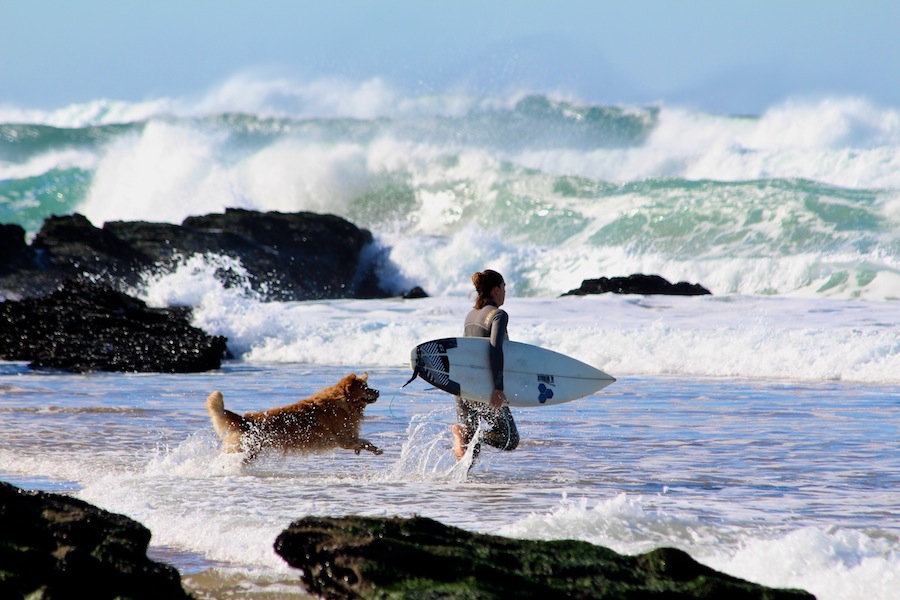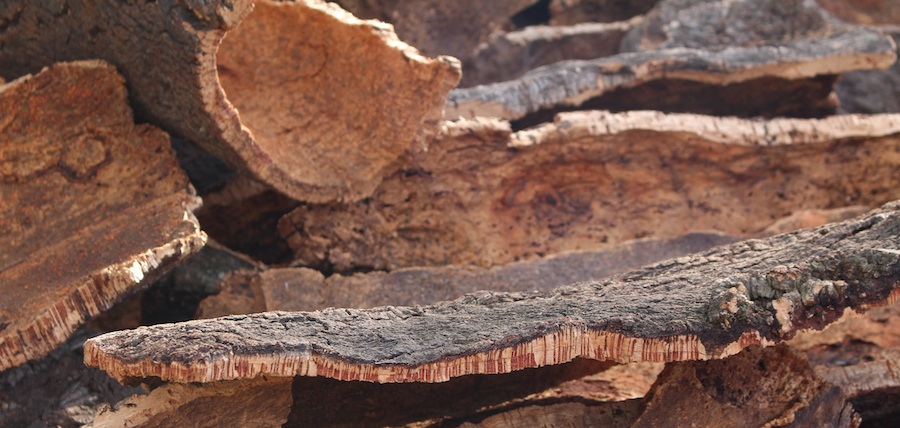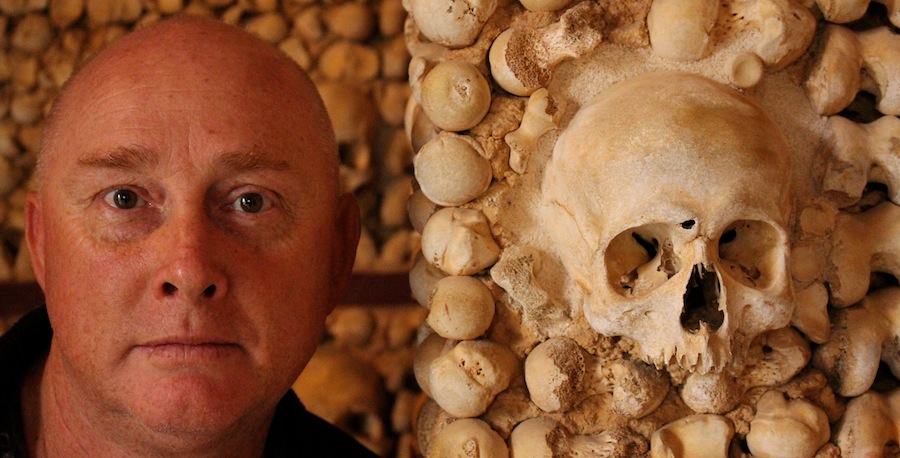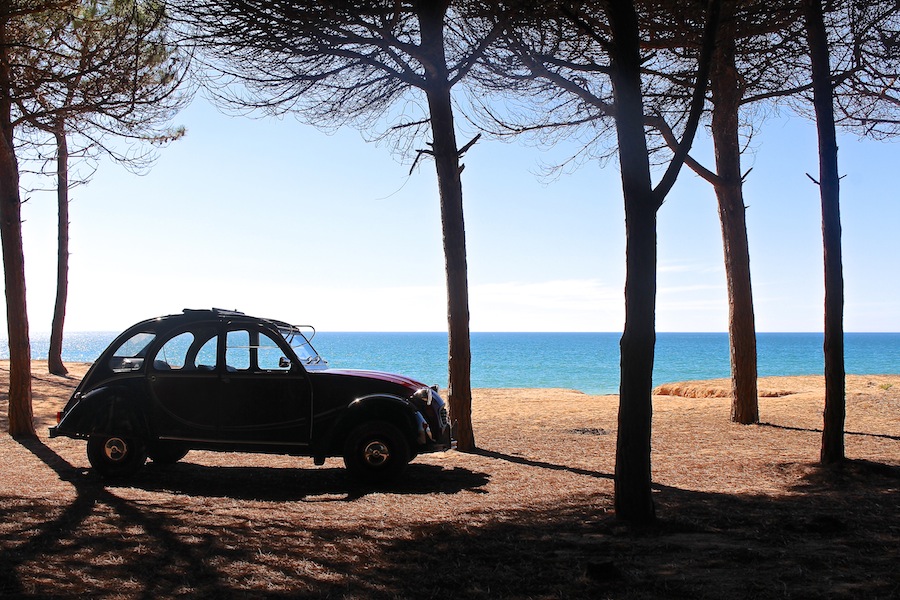Lose yourself in the sun, surf, daft dogs and cool cars of Western Portugal – just because we hope it will make you smile.


This humble little lump of woody fibre that takes decades to create and more often than not, is then just tossed in the bin overnight, is worth a second glance.
The majority of the world’s cork production is in southern Portugal, so we got the chance to do just that.
It generates one of the most diverse ecologies in Europe, gives employment to 60,000 people, stops up 60% of wine bottles, is fire retardant, impermeable and it floats – not much can compare to cork for its diverse range of uses. It takes about 25 years for the cork oak to be ready for its first harvest. The bark is then carefully peeled off with a special axe, leaving a deep red trunk behind, which eventually dulls to brown over the years.
The first harvest is thought to be of lesser quality and is called “male” cork. The good quality material comes after the second or third harvest and is rather evocatively known at “gentle” cork. A harvested tree is left to rest for ten years between each peeling and lives for around 200 years.
It’s a two billion dollar industry that only ever seems to be seen growing on small acreages, on the sides of the road, in small yards and family farms.
Cork production has been hit by the use of screw tops in the wine industry, but the versatile cladding is determined to keep afloat. Corks’ green credentials have helped its PR push – the low carbon footprint and sustainable harvests, as well as the natural habitat it nurtures – who could possibly prefer metal! Any Australian couldn’t help but feel at home in the cork forests of Southern Portugal – as they grow alongside huge Aussie gum trees, giving off a great eucalypt scent as you pass through.
Corks aren’t just for bottling – although that is this the primary usage – it has been used in musical instruments, shuttlecocks, heat shields, laser printers, transmission systems, a boat (honestly – 165,321 wine corks=one boat ), fishing floats, and even fashion.
Its impermeable and thermal properties make it useful in the house and building trade, as waterproof flooring, table mats, mixed with concrete to give better insulation or even just raw.
The Convent of the Capuchos, or Cork Convent in the Sintra hills above Cascais, was built in 1560 for Franciscan monks, and uses the bark extensively as cladding, chairs, doors and window linings.
The convent was intended to keep faith with the notion of simplicity and being at one with the natural surroundings.
If you want to see what austerity measures looked like in the 16th century, then have a prowl around Capuchos.
The melding of rocks, trees and earth into the fabric of the buildings doesn’t get much closer to nature.
So, next time you pop a cork, we hope you have a new-found admiration for the stuff that can float boats, warm houses, dress you and keep your food and drink fresh – we’ll raise a glass to that!

Maybe the jokes in this post are a bit close to the bone, maybe you’ll want to bang your head against the wall, but we’re going to do it anyway. So, sing with us ….”the thigh bone’s connected to the hip bone, the hip bone’s connected to some cement and a metre thick wall…tra la la” – hang on, that’s not right, unless of course you are one of the skeletons of the 1245 monks used to build the Capella dos Osso, or Chapel of Bones in Faro. Dem bones, dem bones ain’t doin’ much dancin’ any more, but for nearly two hundred years they’ve been doing a lot of decorating.
The Chapel is an Ossuary – a box, room or other site designed to hold human bones. Often they were built in order to save space, but usually the bones were not on display – which is what makes the Faro chapel bone-tinglingly unusual. There are one or two other examples in the world, including another notable one in Portugal (what is with you Portuguese and the bones?) and a spectacular sounding one in the Czech Republic, complete with bone chandelier! As you approach the entrance to the Faro chapel, it looks like ornate carvings, not skeletal remains!
The Faro ossuary is tucked away at the rear of a Baroque church, Igreja do Carmo, through a dusty ante room, a narrow door and across a damp courtyard. It doesn’t really feel much fussed over for such a notable place – there was only a skeleton staff to greet us, but it’s hardly a bone of contention – as who’s going to complain?
The décor was kindly “donated” by the long-dead monks who were originally buried in a nearby cemetery, before being dug up and “rearranged” in 1816. It is said that the Chapel is designed “as a memory” to remind us of the brevity of life and how we need to live it well – an inscription over one of the doorways (which now looks out over a nursery school – not creepy at all!) warns those entering under their own steam (and skin) “Stop here and think of this fate that will befall you”. It gives you a chill right through to your ….. oh, you know where.
Joking aside, we would have loved to have known more about dem bones, dem bones – who was the oldest, what happened to the guy with the hole in his head – although Geoff’s daughter, Eliza, who is currently doing a degree in archaeology and forensic anthropology reliably informs us that it happened post-mortem and not as the result of some dodgy Name of the Rose-style incident.
But there is little information to be had. Perhaps their anonymity is another way to reinforce the brevity of life. Here’s a brief slide show and video to go with that thought! Oh, and a terrible joke to end on:
A skeleton walks into a pub and orders a beer… and a mop.
Tibia continued……

We have been living in the Algarve for a couple of weeks now, so we thought you might like to see where we are and what we are doing.
We are currently house-sitting for relatives of friends of ours, in the central/eastern area of the Algarve – the southern most part of Portugal. John and Prue built this house more than 30 years ago, and at that time, this was all just countryside…
Our main job is to take care of Dougal – a West Highland Terrier – aged about 4 years old. He’s quite a character.
We have discovered that he likes riding in the car and rubbing his nose in the dirt, but mainly he likes sleeping wherever we are sitting!
The garden has fruit trees – oranges and limes – as well as olive and avocado trees. The pond is a magnet for dragonflies, birds and even two turtles, but we found them in an amorous embrace – so didn’t want to stare for too long!
Nearby is a great beach alongside a little pine forest – our first taste of the Atlantic ocean on this trip and fabulous long views along the coast.
There are plenty of local markets most days of the week. At nearby Loule this weekend they got into the Day of the Dead / Halloween vibe in amongst the cheery pots of honey, fiery red piri-piri oil, local fish, veggies and other local goodies.
The Algarve – originally an Arabic settlement called Al Gharb or “the West” – is a massive tourist destination. It’s population trebles in the summer months. It can be hard to find places that aren’t developed, but there are some that we have found so far – like Ferragudo, a little fishing village and the hillside retreat of Silves.
Next week we plan to visit the west coast of Portugal – where record breaking waves are mastered by the brave and crazy on some of the best surfing beaches in the world, battered by the massive Atlantic winds.
http://www.youtube.com/watch?v=KGaNUA-lpAc
The wind and the sun (by the way, it’s still 24 degrees here!) make up another powerful force – renewable energy. Portugal is a leader in green energy provision. In 2005 the government made a pledge to reduce the country’s dependence on fossil fuels. In the first quarter of 2013, the wind, waves and sunshine produced 70% of Portugal’s energy needs. Nice work, Portugal!